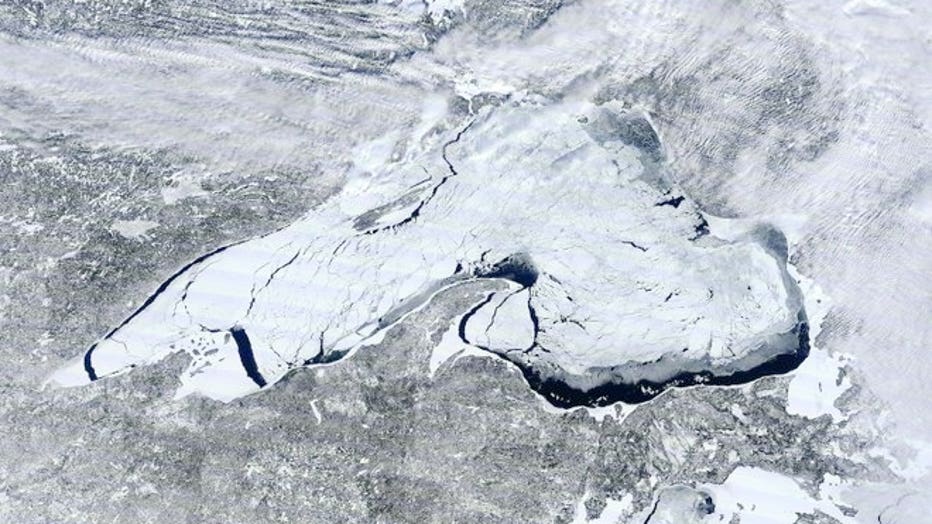Ice coverage rapidly building over Lake Superior, increasing 25% over past week
DULUTH, Minn. - Ice coverage on Lake Superior has increased by nearly 25% over the past week thanks to the long stretch of subfreezing temperatures.

The lake was experiencing historically low percentages of ice in January. But that changed Monday when nearly 32% of the lake had ice, a rapid increase from 7% just a week ago, according to the National Oceanic and Atmospheric Administration.
The expansion of ice coverage is good news for ice anglers, aquatic life that depends on ice cover and shorelines. Ice increase is expected to continue, potentially covering 44% of the lake by the end of this week, The Star Tribune reported Tuesday.
Ice usually reaches its annual maximum in late February to early March. The NOAA had predicted last month that the lake’s ice would peak at 31%.
Recent ice expansion is between the North and South Shores in the western "nose" of Superior, within and south of the Apostle Islands, and between Isle Royale and mainland Minnesota and Canada, the National Weather Service’s Duluth office said Monday.
"It’s important to remember ice is never 100% safe and that much of this ice is newly formed and can still shift and move," the agency noted.
More than two dozen ice anglers were rescued after an ice floe broke off near Duluth’s shoreline last week. Although there were no injuries, equipment worth thousands of dollars was abandoned.
Consecutive low ice years could cause the lake to warm, which risks creating an environment in warm months for harmful algae blooms that choke out aquatic life and can be toxic to humans, according to researchers.
The second-lowest average ice coverage for Lake Superior was in January, according to NOAA records that date to 1973.

